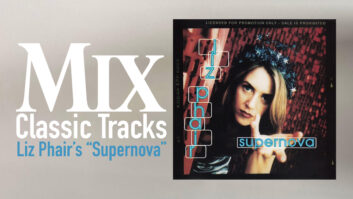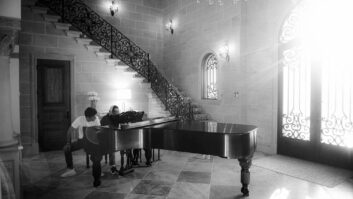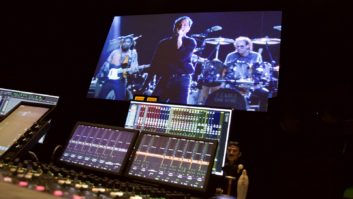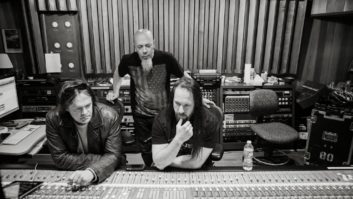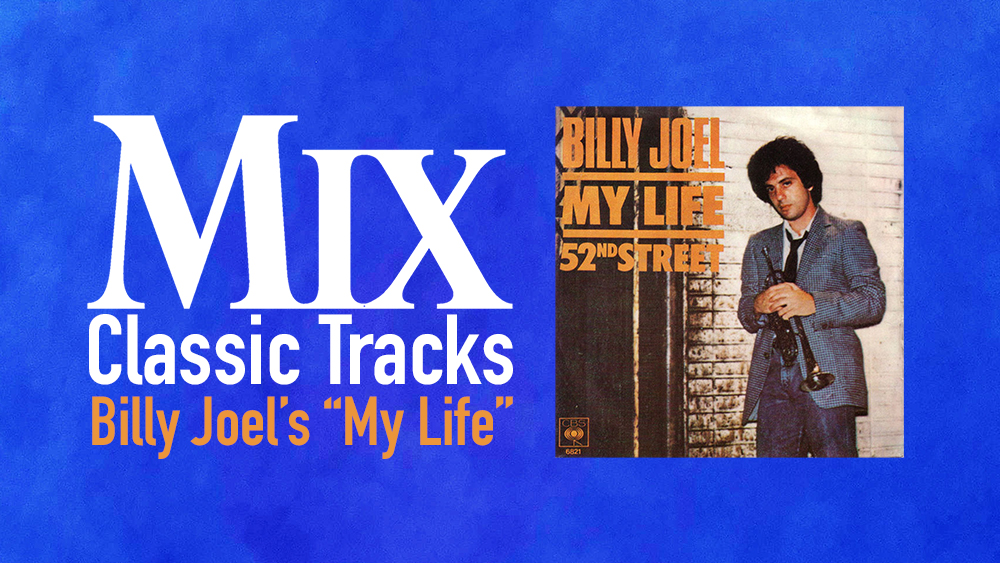
By 1977, Billy Joel’s career was finally getting off the ground. The Long Island native had been toiling in the trenches for years and put out four albums, none of which was a exactly a hit, but did get Joel on the radio with songs such as “Piano Man,” “The Entertainer” (which cracked the Top 40), “Say Goodbye to Hollywood” and “New York State of Mind”—all now considered classics. His famously energetic live performances added to his growing reputation, but there was still a lingering sense that Joel’s albums weren’t all that they could be.
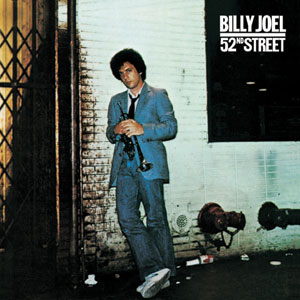
That changed in 1977, when Joel hooked up with producer Phil Ramone to make The Stranger. Of course, Ramone was already a New York recording legend, having cut his teeth producing jazz albums with the likes of John Coltrane, Gil Evans and Wes Montgomery; seminal bossa nova records with Astrid Gilberto (and Stan Getz); pop artists such as Dionne Warwick, Burt Bacharach and Barbra Streisand; and a slew of top singer-songwriters, including Bob Dylan, Phoebe Snow, Kenny Loggins and Paul Simon (whose Still Crazy After All These Years won the Album of the Year Grammy in 1976). Ramone had originally been approached to produce Joel’s 1976 opus, Turnstiles, but the timing didn’t work out. The following year the stars aligned, and their incredibly productive 10-year partnership began in the summer of 1977 at Ramone’s A&R Recording in Manhattan.
Actually, at that point there were two A&R studios—his original facility on West 48th Street (which dated back to 1958), and also a more recent acquisition on 7th Avenue and 52nd Street in an enormous space (60x65x40) that was previously owned by CBS and which had hosted everything from symphony orchestras to some of the most successful pop singers of the ’50s and ’60s, to the old Mitch Miller television program Sing Along With Mitch. Both studios were used on The Stranger and the 1978 follow-up, 52nd Street, which is the source of this Classic Track, the hit single “My Life.” Tracking was done in the 7th Avenue studio; mixing and some overdubs were at 48th Street. Aiding Ramone in the studio was engineer Jim Boyer, who, despite holding a degree in electrical engineering, had eagerly signed on at A&R as an assistant, at first working primarily on commercials.
“I worked my way up,” Boyer recalls. “I started doing some engineering work, and at that point I didn’t really know who Phil was; I knew he was the ‘R’ in A&R. I said to myself, ‘I don’t really want to do jingles for the rest of my life,’ so one day I just went to him and said, ‘Can I work for you?’ Everybody said, ‘You can’t do that. You’re not allowed to talk to Phil.’ I guess it was one of those things where you had to sort of pay your dues before you could approach Phil. I didn’t know him, so I had no fear, and he wasn’t happy with the person he was working with at the time, so I started working with him. My first credit with him was A Star Is Born. I did a lot of the vocal comps for the movie, so I did a lot of work in L.A. at Kenny Rogers’ studio. I learned a lot.”
Was Phil a good teacher? “Yes, but it was also sort of a baptism by fire. There were moments when he would really teach, and those were always special. But there were also moments where he looked at you like: ‘Don’t you know what to do?’” Boyer says with laugh. “I loved the guy, and we clicked. I worked with him on most of his projects for a long time, unless he went out of town.”
The key to working with Joel, Boyer says, was to get him comfortable in the studio: “Billy and his band were consummate live performers, but the studio was like poison to them, because they felt like they were under a microscope. So before we started The Stranger album, Phil and I sat down and said, ‘There’s got to be some way to create a live environment for them, so they can get that fear out of their heads.’ That’s when 7th Avenue [studio] was still alive, and A-1 was the perfect place to record them because it was a huge room—an old scoring studio. It was built so all the leakage in it was good.”
Joel was thrilled that unlike some previous producers, Ramone was enthusiastic about working with the core of the singer’s small but versatile road band—drummer Liberty DeVitto (whom Joel knew from his high school band days on Long Island), bassist Doug Stegmeyer and reeds player/organist Richie Cannata. For guitars, however, they brought in some top session pros—Steve Kahn, Hiram Bullock and Hugh McCracken for The Stranger; on 52nd Street, Kahn dominated, but there were also contributions on a few songs from McCracken, David Spinozza and Eric Gale.
Boyer says, “Billy always keyed off Liberty, so we had them face each other. Billy was in the center of this big room, and there was a sort of sweet spot for drums, so we placed Liberty there on risers, maybe 15 yards from each other. They were really locked into each other—the accents and the way they played, it was almost like one person playing drums and piano sometimes. The bass player was right next to the drums, and we put the guitars in an isolation booth, but we took the front off the booth so they could feel like they were part of the room.”
The console in the A-1 control room was a pre-automation Neve 8078, and the recorder was an Ampex 24-track, “though sometimes we used two 16-track machines because you got cleaner recordings with less distortion and better dynamic range,” Boyer says.
Tracking was done with the full group live, Joel’s lead vocals recorded at the same time as the piano. “The piano was his prop and his security blanket,” Boyer comments, “so we used mics that had good rejection. Billy played the piano really hard, so that was important. For his vocals, we used a beyer 250, and for the grand piano we used [AKG] 414s and sometimes [Neumann] 87s, with the lid half-stick.”
Ramone wrote in his book, Making Records: The Scenes Behind the Music, “To help Billy find the right voice when he was recording, I made him a control box with Echoplexes, MXR phasers and flangers. We labeled the buttons ‘Elvis,’ ‘Doo-wop,’ ‘R&B,’ etc. and put it right on the piano so he could switch the effects around until he hit one he liked.”
As for drummer DeVitto, “He hit those drums really hard,” Boyer notes. “In the regular recording world, the guys who played on jingles hit them really light, so you used a lot of condenser microphones. But with Liberty, we used mostly dynamic mics. I used a D12 in the kick drum, which at that time was sort of a new mic.” He put a Shure 57 top and bottom on the snare, Sennheiser 421s on the toms and 414s as overheads. Bass was captured direct (and put through a Lang EQ), and guitars were miked with Sony C-37s.
Boyer says, “Billy was not a studio person, so you weren’t going to get five takes out of him. Phil said, ‘I want you to record everything—record the effects and whatever you’re doing and make sure we have it on tape, because if that’s the take and we have to fix something, you’ll have a recording of what the effects were. So it was like one, two or three takes and that was it. When Billy said that was the take, he sometimes went home! But he knew when he’d gotten it.
“The biggest problem working in that room,” he continues, “was you had to have a good mix going, because when you took the final tracks over to mix, you had leakage, so if you pulled any of the mics out of the live track, you would hear the change. You could only do so much to the mix without changing it pretty dramatically. Also, for guitar overdubs, we did most of the recording in the same room we did the tracks. That way, if we had to repair a guitar track, when you switched tracks you had the same kind of leakage, so you wouldn’t hear the ambience change.”
Ramone mixed at the 48th Street studio, which had a custom, heavily modified tube broadcast console. “We had some great old EMT plates over there that had been tweaked and hot-rodded so they were really clean,” Boyer says. “They were locked in a basement room, and they were only wired to Phil’s studio. He loved those.”
Cover Story: How Billy Joel and Freddy Wexler Created ‘Turn the Lights Back On’
The Stranger was a shocking success when it came out in the fall of ’77—it produced four Top 40 singles (“Just the Way You Are,” “Movin’ Out,” “Only the Good Die Young” and “She’s Always a Woman”), sold 4 million records in its first year alone and won Grammy Awards for Record of the Year and Song of the Year (for “Just the Way You Are”). It lost Album of the Year to Saturday Night Fever. Overnight, Joel went from playing theaters to arenas. Rather than riding that momentum to its natural conclusion, however, he went back into A&R for two months in the summer of 1978 and cut the follow-up album, 52nd Street, with Ramone and Boyer.
The song that kicks off that album, “My Life,” is a churning, mid-tempo rocker that captured Joel’s confident and defiant side: “I don’t care what you say any more, this is my life / Go ahead with your own life and leave me alone.” It’s propelled by pumping bass and drums and Joel’s keyboards—“It sounds like multiple keyboards, but I think it was probably only two, the main one a Rhodes which we ran through tape phasing,” Boyer says. The obviously Beatles-inspired harmonies by Chicago members Peter Cetera and Donnie Dacus (Ramone had produced a couple of their albums) were added later.
In Ramone’s book, he quotes this anecdote about “My Life” from Liberty DeVitto: “[Phil] wanted me to play a very straight beat, and I bucked him. ‘I ain’t playing that disco bullshit,’ I said. Phil got up, slammed something on the console and scolded me like he was my father. ‘You’ve been in this business for what—12 minutes? And you’re gonna tell me what you’re gonna play? Just get the hell in there and play the way I told you to play.’ I grumbled about it then, but every time I see the Gold record I received for ‘My Life’ on the wall, I mutter, ‘F—in’ guy was right!’”
Indeed, “My Life” shot all the way to Number 3 (“Big Shot” followed, to Number 4) and 52nd Street rocketed to Number One on the album charts (a first for Joel), where it stayed for eight weeks. It sold more than 2 million copies in its first month alone (over 7 million total), and it went on to win 1979 Grammys for Album of the Year and Best Pop Vocal Performance.
All in all, it was quite a couple of years for Joel, Ramone and Boyer, and that team would stay together all the way through Joel’s 1986 album, The Bridge, enjoying many more hits along the way.
